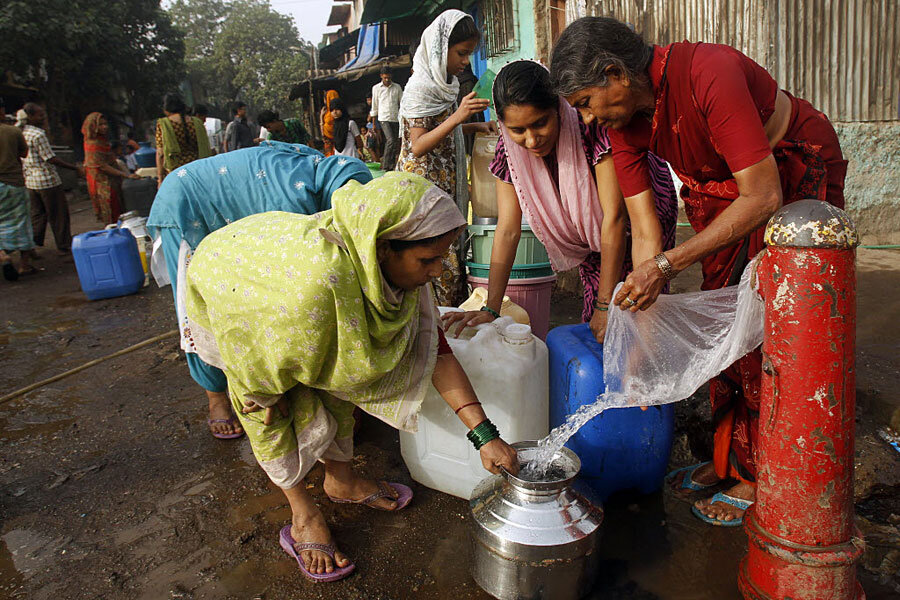Four billion people face severe water scarcity. Is there hope?
Loading...
Freshwater is a key part of our lives. We drink it, we bathe in it, and we grow crops with it. But many people across the globe don't have enough of it.
Some scientific studies have suggested that between 1.7 and 3.1 billion people face freshwater scarcity. But a new study blows those estimates out of the proverbial water.
Some 4 billion people, nearly two-thirds of the world's population of 7.125 billion, face severe freshwater scarcity, according to a new study published Friday in the journal Science Advances.
Although 66 percent of the world's population sounds pretty bad, that number includes everyone who experiences freshwater scarcity for at least a month each year.
"Water scarcity generally occurs only during part of the year, when there is a mismatch between water availability and demand," study author Mesfin Mekonnen explained to The Christian Science Monitor's Story Hinckley.
Some regions face the shortages worse than others. About 1 billion of the 4 billion affected live in India, while 0.9 billion live in China. Those nations, not surprisingly, have the largest populations in the world. China has 1.32 billion residents and India has 1.13 billion.
Other regions, including in the forested areas of South America, Central Africa, Malaysia-Indonesia, appear to be less susceptible to water scarcity. "Other places with low water scarcity throughout the year can be found in the eastern half of the United States, in large parts of Europe, and in parts of South China," the study authors write in their paper.
Intense scarcity stretches across a broad band of land in northern Africa through the Middle East. A study last year examined the effect of climate change on the Horn of Africa, and that team predicted the drought-stricken region will only get more parched.
The United Nations website states, "Water scarcity is both a natural and a human-made phenomenon. There is enough freshwater on the planet for seven billion people but it is distributed unevenly and too much of it is wasted, polluted and unsustainably managed."
So what can be done?
"There is no single silver bullet to deal with the problem around the world," said Tom Gleeson, a professor in the Department of Civil Engineering at McGill University who published a 2014 paper in the journal Nature Geoscience outlining six different ways to reduce water scarcity, in a news release.
That research team suggested combining different methods as fits. Their suggestions included measures to make irrigated agriculture more efficient, improving infrastructure to reduce industrial and domestic water waste, improving water-recycling, limiting population growth in particularly stressed regions, increasing storage in reservoirs and increasing desalination of seawater.
"Significant reductions in water-stressed populations are possible by 2050," co-author on the 2014 paper, Yoshihide Wada from the Department of Physical Geography at Utrecht University, said in the news release, "but a strong commitment and strategic efforts are required to make this happen."






